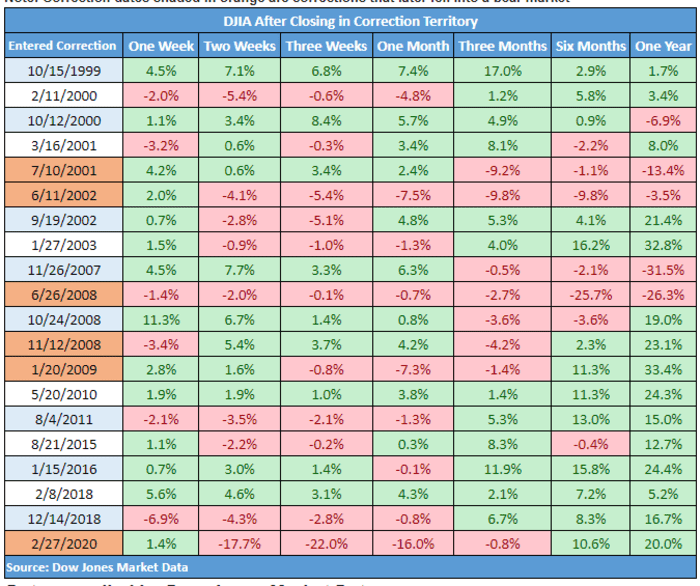The Dow Jones Industrial Average was on the verge of entering correction territory after closing sharply lower on Wednesday as the Pentagon said that Russian troops were poised to launch a full-blown invasion of Ukraine.
The 125-year old Dow Industrials
DJIA,
-1.38%
fell around 465 points, or 1.4%, to close near 33,132, after trading as low as 33,084.90. A close below 33,119.685 would mark a 10% decline from its Jan. 4 record high, meeting the commonly used definition of a correction.
The Dow would join the Nasdaq Composite Index
COMP,
-2.57%
and the S&P 500
SPX,
-1.84%,
which on Tuesday finished in correction territory for the first time in 2 years.
The Dow last finished in correction on Feb. 27, 2020, and extended the decline into a bear market, defined as a drop of at least 20% from a recent peak, during the height of the pandemic-fueling selloff two years ago.
This time around the combination of tighter monetary policy from the Federal Reserve to combat inflationary pressures and geopolitical tensions were squelching bullish sentiment.
On Wednesday, the Pentagon said that 80% of the Russian troops and separatist forces in the Donbas region of Ukraine are in position to deliver a fuller attack on the Eastern European country.
Although a decline into correction can be unsettling for investors in the short term, over the longer run such a condition tends to give way to gains in the one week and one year period, according to Dow Jones Market Data.
On average, the Dow gains 2.7% a week after finishing in correction, and finds itself at the same level two weeks out, but the index gains 3.3% about a month out, 5.2% in the six months following a 10% fall from a peak and 8.7% a year afterward, based on data going back to 1896.

Dow Jones Market Data
Of the past 20 corrections, the Dow has been positive 12 months later 15 times, or 75%, of the time.

Uncredited
To be sure, the sample size is small and there are instances, such as 2008 and 2007, when declines deepened a year out.
